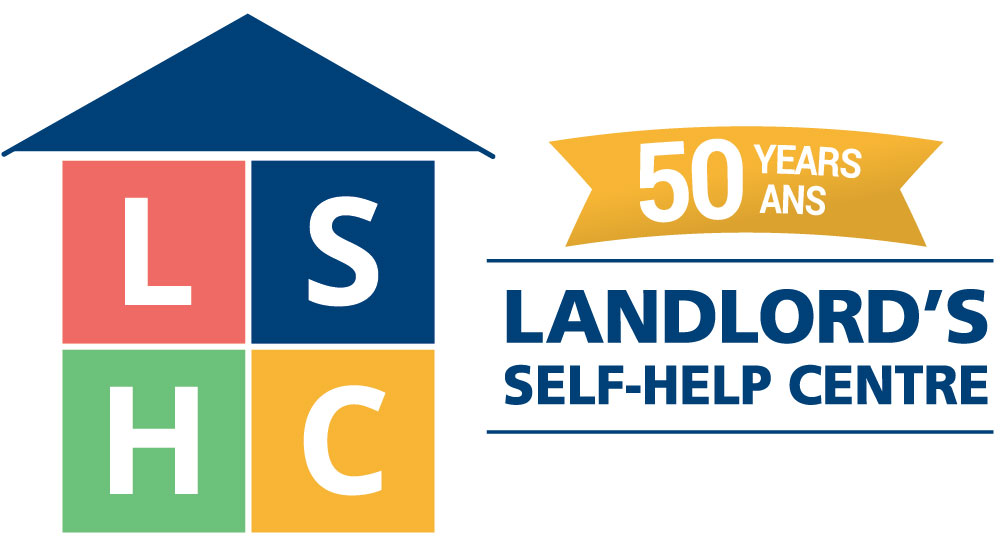
L2- Application to End a Tenancy and Evict a Tenant (N12)
Transcript
Introduction
Welcome to Landlord’s Self-Help Centre’s module about terminating a tenancy for own use. The information offered in this presentation is intended as general information, it is not legal advice. If you need more information, please contact a legal service provider.
After serving the N12 notice to your tenant, the next step is to file the L2 application with the landlord and tenant board to schedule your hearing date.
It’s important to note that the N12 notice becomes void if the landlord does not apply to the Board within 30 days of the termination date.
Filing the L2 application
The landlord can file an L2 application with the Landlord and Tenant Board at any time after serving the N12 notice based on landlord’s or purchaser’s own use.
The L2 application can be filed in person at a designated Service Ontario location for a fee of $201, or online through the Landlord and Tenant Board’s portal option for a fee of $186.
The Landlord and Tenant Board website has links to instructions for many of their notices and applications, so make sure to read through them and use them to help fill out the forms.
L2 Application
The L2 application is used with many different termination notices so make sure to only fill out the information relating to the N12 notice, but keep all the pages together.
L2 Application Part 1: General information
Make sure the address in the L2 application matches what you have on the N12 notice.
L2 Application Part 1: General information (continued)
If there is more than one landlord, use the Schedule of Parties form from the Landlord and Tenant Board website to add them to the application.
L2 Application Part 1: General information (continued)
Similarly, if there are more than 2 tenants, you should also use the Schedule of Parties form to add them to the application.
L2 Application Part 1: General information (continued)
If there is already a hearing date set for another issue such as arrears of rent, record the file number in the Related Applications section to alert the Landlord and Tenant Board. They may be able to join the applications so that both issues are dealt with at the same hearing.
You can only file the L2 application based on the N12 if the tenant is still in possession of the rental unit.
L2 Application Part 2: Applying to end the tenancy
Make sure to check off the boxes next to Reason 1 and the N12.
The termination date must match the termination date indicated on the N12 notice.
L2 Application Part 3: Applying to collect money, the tenant may owe you
By selecting Reason 1 in this section, you are asking for the Landlord and Tenant Board Order to include a clause that says that the tenant must pay for each extra day they are in the rental unit past the termination date on the N12 notice.
L2 Application Part 3: Applying to collect money the tenant may owe you (continued)
If you are only applying to the Landlord and Tenant Board based on the N12/L2 you can ask for the Landlord and Tenant Board to award you costs for any NSF charges you have incurred.
Do not fill out this table if you have also filed for non-payment of rent and already included these amounts on the L1 application.
L2 Application Part 3: Applying to collect money the tenant may owe you (continued)
Use this section to let the LTB know what the rent amount is and whether or not you have a Last Month’s Rent (LMR) deposit. This information will be used to calculate a per diem rent amount.
Interest on the LMR is owed to the tenant annually and is based on the annual guideline amounts. Visit LSHC’s website for more information about the guideline.
L2 Application Part 4: Total Amount Owing
This part allows you to calculate the total amount the tenant owes.
L2 Application Part 5: Signature
Anyone can file these documents for the landlord with the LTB. However, only the landlord or landlord’s legal representative such as a lawyer or paralegal should sign this application.
L2 Application: Schedule B-Part A: Compensation
The LTB will not issue an order ending the tenancy and evicting the tenant unless you have compensated the tenant in an amount equal to one month’s rent or offered them another rental unit that is acceptable to them. You must pay the compensation on or before the termination date on the N12 Notice. Answer the questions in this section indicating how you have compensated the tenant.
L2 Application: Schedule B-Part B: Declaration
The Declaration form applies to both landlord’s own use and purchaser’s own use and is a separate document that must be completed by the person moving into the rental unit. The declaration must be submitted with the L2 application. This form can be found on the Landlord and Tenant Board’s website.
Declaration v. Affidavit
On the left is an image of the Declaration and on the right is an image of the Affidavit.
The main difference between the two is that the Affidavit is sworn before a Commissioner of Oath and the Declaration is not.
The Landlord and Tenant Board made the declaration available as a way to speed up the filing process. It does not matter which form is used as long as it is filled out properly and with truthful information by the person who intends to move into the property. This person should also attend the hearing.
L2 Application: Schedule B-Part C: Previous N12 or N13 Notices
Landlords also have to disclose any previous N12 or N13 notices given for this rental unit or any other rental unit in the past two years.
Check off the box below the chart if no other N12 and N13 notices have been given in the past two years for this rental unit or any other rental unit.
Gather all required documentation
Make sure to gather all required documentation before filing this notice and application with the landlord and tenant board. All the forms can be found on the landlord and tenant board’s website.
What happens at the Landlord and Tenant Board Hearing?
Organize supporting documentation
It is important for the landlord to have all their supporting documentation at the hearing.
For example, if the unit is required for a caregiver, gather medical or other information that can be offered in support of the application and illustrate the need for the caregiver.
The Landlord and Tenant Board hearings are open to the public via Zoom, so you may find it helpful to observe other hearings before your hearing date and get a sense of the process. Contact the Landlord and Tenant Board to obtain Zoom links.
Landlord and Tenant Board Hearing
These hearings are usually conducted online through Zoom in front of an adjudicator.
The tenant can dispute the application if they do not believe that the landlord or purchaser is acting in good faith, so the landlord will have to explain the reasons for giving the notice to terminate the tenancy and demonstrate that there is a good faith intention by the landlord, purchaser, immediate family member of the landlord or purchaser, or a caregiver for one of these individuals to move into the rental unit. The person who will occupy the unit should be present at the hearing. After the hearing, an Order will be issued and sent to both parties with a decision.
Tenant’s bad faith application
If the qualifying individual does not move into the rental unit within a reasonable time after the tenant moves out; or the landlord advertises the unit for rent or for sale within the first year; enters into a new tenancy agreement; or converts or demolishes the rental unit or building, the tenant can file a T5 application against the landlord for bad faith, and they can file this application anytime within the first 12 months after moving out of the rental unit.
It is important to note that even if the landlord was initially successful in obtaining an order for termination based on the N12/L2, they can still be found to have acted in bad faith.
Watch our Landlord Learning Module on Bad Faith: What happens now? to learn more about Bad Faith applications.
Bad Faith- Tenant moved out
If the landlord has been found by the Landlord and Tenant Board to have acted in bad faith, they can be ordered to pay things such as:
- Differences in rent for up to 1 year,
- Reasonable out of pocket moving and storage expenses,
- A fine to the Landlord and Tenant Board, or
- Anything the Board considers appropriate under the circumstances
Gather information & educate yourself
It is very important that you do your research to make sure this process is appropriate for your situation. If you serve your tenant(s) with an incorrect notice, it can cause other problems for you down the road.
Use resources found on the Landlord and Tenant Board, and Landlord’s Self-Help Centres websites to help guide you through the proper process.
Conclusion
Thank you for watching this module about the L2 application to end a tenancy and evict a tenant after serving the N12 notice for landlord or purchaser’s own use.
The information offered in this presentation is intended as general information, it is not legal advice.
If you have a specific issue or situation, please contact a legal service provider.

